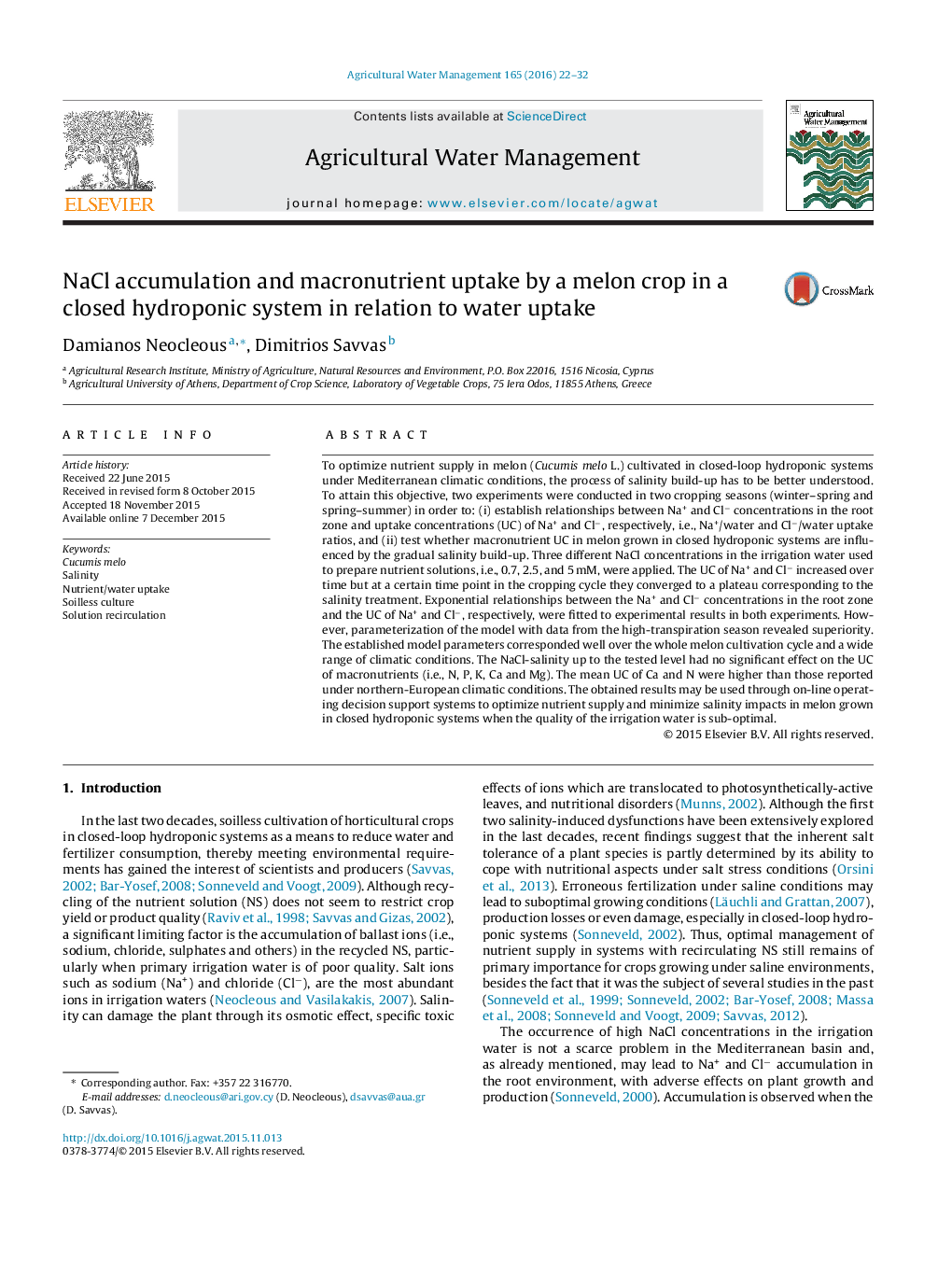| Article ID | Journal | Published Year | Pages | File Type |
|---|---|---|---|---|
| 4478297 | Agricultural Water Management | 2016 | 11 Pages |
•Na and Cl to water uptake by melon relate exponentially to external Na and Cl levels.•Na and Cl accumulation in closed hydroponic melon relates to cumulative water uptake.•Simulation of Na and Cl buildup in closed hydroponic melon was successfully tested.•External NaCl up to 45 mM did not restrict uptake concentrations of nutrients by melon.
To optimize nutrient supply in melon (Cucumis melo L.) cultivated in closed-loop hydroponic systems under Mediterranean climatic conditions, the process of salinity build-up has to be better understood. To attain this objective, two experiments were conducted in two cropping seasons (winter–spring and spring–summer) in order to: (i) establish relationships between Na+ and Cl− concentrations in the root zone and uptake concentrations (UC) of Na+ and Cl−, respectively, i.e., Na+/water and Cl−/water uptake ratios, and (ii) test whether macronutrient UC in melon grown in closed hydroponic systems are influenced by the gradual salinity build-up. Three different NaCl concentrations in the irrigation water used to prepare nutrient solutions, i.e., 0.7, 2.5, and 5 mM, were applied. The UC of Na+ and Cl− increased over time but at a certain time point in the cropping cycle they converged to a plateau corresponding to the salinity treatment. Exponential relationships between the Na+ and Cl− concentrations in the root zone and the UC of Na+ and Cl−, respectively, were fitted to experimental results in both experiments. However, parameterization of the model with data from the high-transpiration season revealed superiority. The established model parameters corresponded well over the whole melon cultivation cycle and a wide range of climatic conditions. The NaCl-salinity up to the tested level had no significant effect on the UC of macronutrients (i.e., N, P, K, Ca and Mg). The mean UC of Ca and N were higher than those reported under northern-European climatic conditions. The obtained results may be used through on-line operating decision support systems to optimize nutrient supply and minimize salinity impacts in melon grown in closed hydroponic systems when the quality of the irrigation water is sub-optimal.
